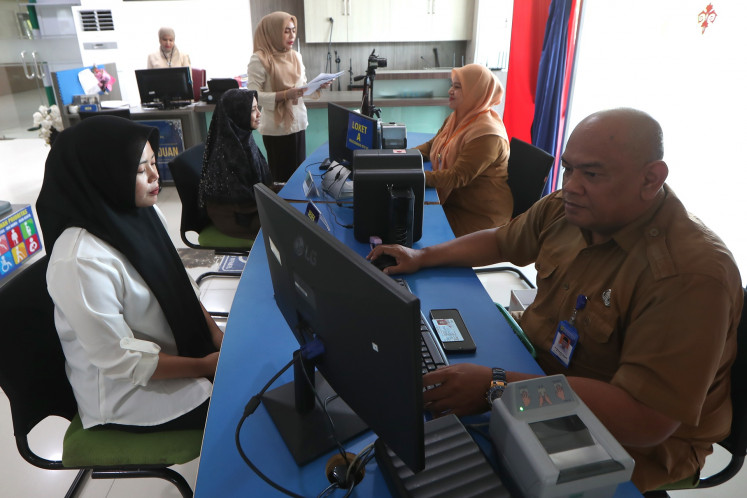Popular Reads
Top Results
Can't find what you're looking for?
View all search resultsPopular Reads
Top Results
Can't find what you're looking for?
View all search resultsLetters: Time to drop `kebaya' and `sanggul'
During the Kartini Day celebrations, a lot of women or girls will wear kebaya, the national costume for women
Change text size
Gift Premium Articles
to Anyone
During the Kartini Day celebrations, a lot of women or girls will wear kebaya, the national costume for women. Be it in offices, banks, or hotels, a lot of service agencies will require their ladies to wear the kebaya complete with evening slippers, as well as sanggul, the traditional hairdo. Most elementary schools will hold a national costume competition, where young girls will wear kebaya and thick make-up like adult women. Some districts will also have a Kartini pageant and kebaya fashion show.
So these are the attractions of Kartini Day. How are they related to the commemoration of the nation's heroine? Or how are they linked to women's emancipation? A lot of people, at least those who are critical and who care enough, have been wondering for years. But as the bunny comes for Easter and Santa for Christmas, this rather ridiculous way of celebrating National Women's Day is being maintained year after year.
I will not attempt to trace the historical background of why these kinds of celebrations occur. Instead, I only want to ring a wake-up call for all of us. It is time to stop reducing the meaning of Kartini's struggle for women's emancipation by commemorating her in this fashion.
First, celebrating Kartini Day by wearing kebaya does not express anything about the progressive ideas and thoughts that made Kartini a national heroine. It is like commemorating General Sudirman's fight for independence by wearing a long coat to resemble him. There is no meaning attached to it, nor any single relevance.
Second, by wearing kebaya, or by participating in costume competitions, fashion shows, cooking festivals and the like, we are only celebrating Kartini's femininity. While in reality, her ideas about women's emancipation did not have anything to do with the image of femininity or motherhood that is being associated with her.
Remember that in her time, the construction of motherhood was deeply embedded in society. From a very young age, girls were expected to stay at home and be trained in all the domestic roles they would perform once they had her first menstruation and entered their pre-arranged marriage. Once they were married, they had be the dutiful wife, whose business would only be in the kitchen and the bedroom. They had to accept their fate with no complaints, even if they were engaged in a polygamous union. These were the dominant assumptions of feminine beauty or good female figures in her time.
But Kartini stood against the crowd, demanding education rights for women. She believed women should not be limited to the private domain, but that they should be educated to gain access to the public spheres and be their own agent. Now, if we are to celebrate her fight for women's development by simply wearing kebaya, sanggul and accentuating feminine attributes, aren't we actually betraying the essence of her fight?
Let us drop the fashion shows, costume competitions and all those particularly female activities. We can start commemorating Kartini by sharing her spirit of emancipation and trying to find a space where we can meaningfully do something to improve the condition of women's lives. It is time to get things right.
Chrysant Lily Kusumawardoyo
Albany, New York










